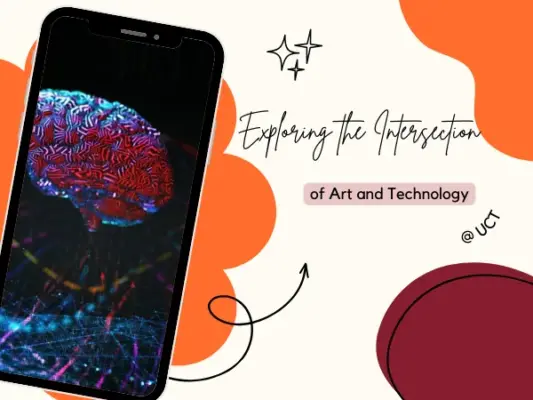
Introduction
The fusion of art and technology has given rise to a vibrant and dynamic landscape where creativity and innovation collide. This intersection is not merely a blending of disciplines but a transformative force that reshapes how art is created, experienced, and understood. In this blog, we delve into the exciting ways art and technology intersect, exploring how this synergy is driving the future of both fields.
1. Digital Art and NFTs
What It Is:
Digital art represents the use of digital tools and technology to create and display artworks. NFTs (Non-Fungible Tokens) have revolutionized the digital art world by providing a way to authenticate and trade unique digital assets.
How It Works:
– Digital Creation: Artists use software like Adobe Photoshop, Illustrator, and 3D modeling tools to create digital artworks.
– NFTs: These are blockchain-based tokens that represent ownership of digital art. Each NFT is unique and verifiable, providing proof of authenticity and ownership.
Impact:
NFTs have democratized art ownership and created new revenue streams for artists, while digital art offers limitless possibilities for creative expression and innovation.
2. Augmented Reality (AR) Art
What It Is:
Augmented Reality (AR) overlays digital content onto the real world through devices like smartphones and AR glasses. This technology has opened up new dimensions for interactive and immersive art experiences.
How It Works:
– AR Applications: Artists create digital content that interacts with physical spaces when viewed through AR apps.
– Interactive Exhibitions: AR art installations allow viewers to engage with artwork in novel ways, enhancing the sensory experience.
Impact:
AR transforms traditional art forms by adding layers of interaction and engagement, offering audiences a new way to experience and interpret art.
3. Generative Art
What It Is:
Generative art involves using algorithms and computational processes to create artwork. The artist sets parameters and rules, and the software generates the final piece based on these guidelines.
How It Works:
– Algorithm Design: Artists write code or use software to define the rules and parameters for generating art.
– Execution: The software executes these algorithms to produce unique and often unexpected results.
Impact:
Generative art challenges traditional notions of authorship and creativity, showcasing how technology can create complex and aesthetically pleasing works autonomously.
4. Virtual Reality (VR) Art
What It Is:
Virtual Reality (VR) art immerses viewers in fully digital environments where they can interact with and explore artistic creations in three dimensions.
How It Works:
– VR Platforms: Artists use VR platforms like Oculus Rift or HTC Vive to create and present their work.
– Immersive Experiences: Viewers navigate virtual spaces and interact with art in a way that is impossible in the physical world.
Impact:
VR art provides an immersive and interactive experience, allowing audiences to engage with art on a more profound and personal level.
5. Art and Artificial Intelligence
What It Is:
Artificial Intelligence (AI) in art involves using machine learning algorithms to create, analyze, and even curate art. AI can mimic human creativity or generate entirely new artistic styles.
How It Works:
– AI Algorithms: AI systems are trained on large datasets of art to learn patterns and styles.
– Creation and Curation: AI can produce new artworks or assist in curating art collections based on learned preferences.
Impact:
AI introduces new possibilities for creativity and originality, pushing the boundaries of what art can be and challenging traditional ideas of artistic expression.
6. Interactive Art Installations
What It Is:
Interactive art installations use technology to create dynamic and engaging experiences that respond to viewer input or environmental changes.
How It Works:
– Sensor Integration: Artists integrate sensors and technology to detect and respond to interactions, such as motion, touch, or sound.
– Real-Time Interaction: The artwork evolves or changes based on viewer interaction, creating a unique experience for each person.
Impact:
Interactive art fosters a deeper connection between the audience and the artwork, turning passive viewers into active participants in the creative process.
Conclusion
The intersection of art and technology represents a rich and evolving landscape where new forms of creativity and expression continually emerge. From digital art and NFTs to AR, VR, and AI, the synergy between these fields is expanding the boundaries of artistic possibility and enriching the way we experience and understand art. Embracing this intersection not only drives innovation but also invites us to explore and redefine the future of both art and technology.